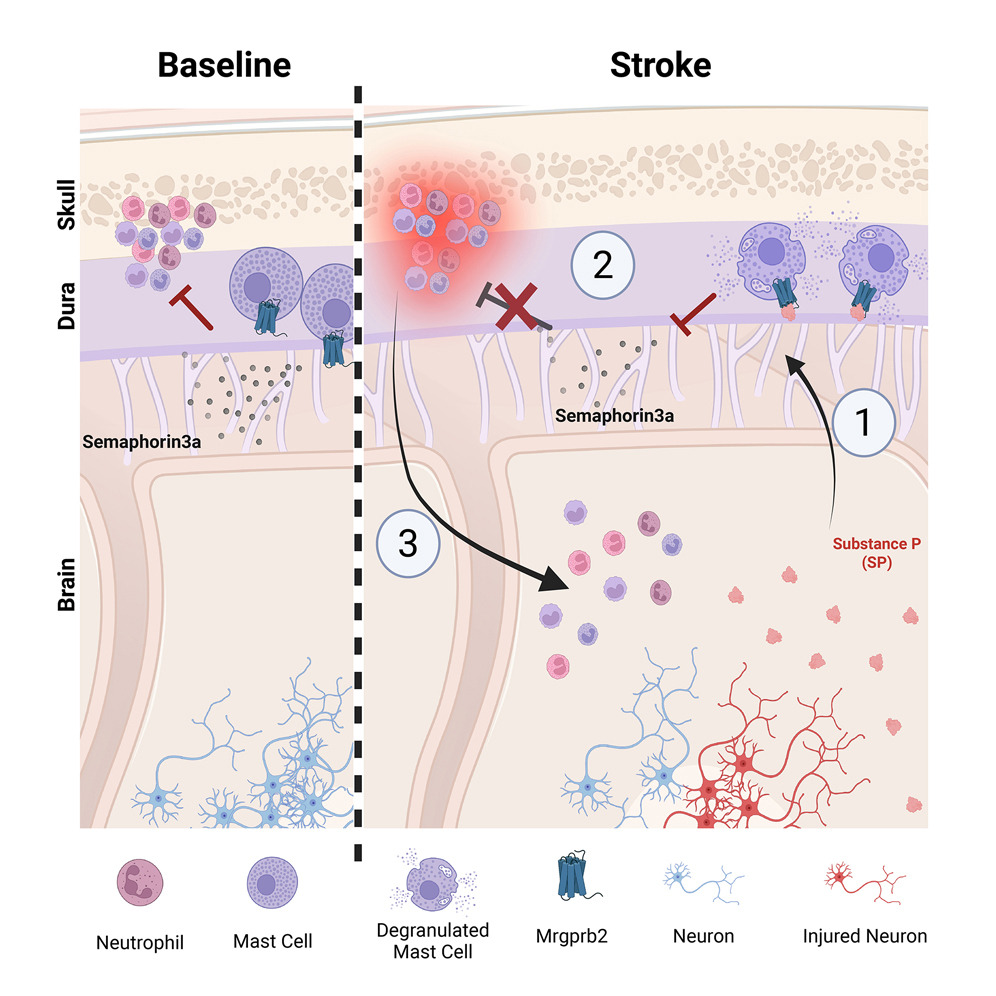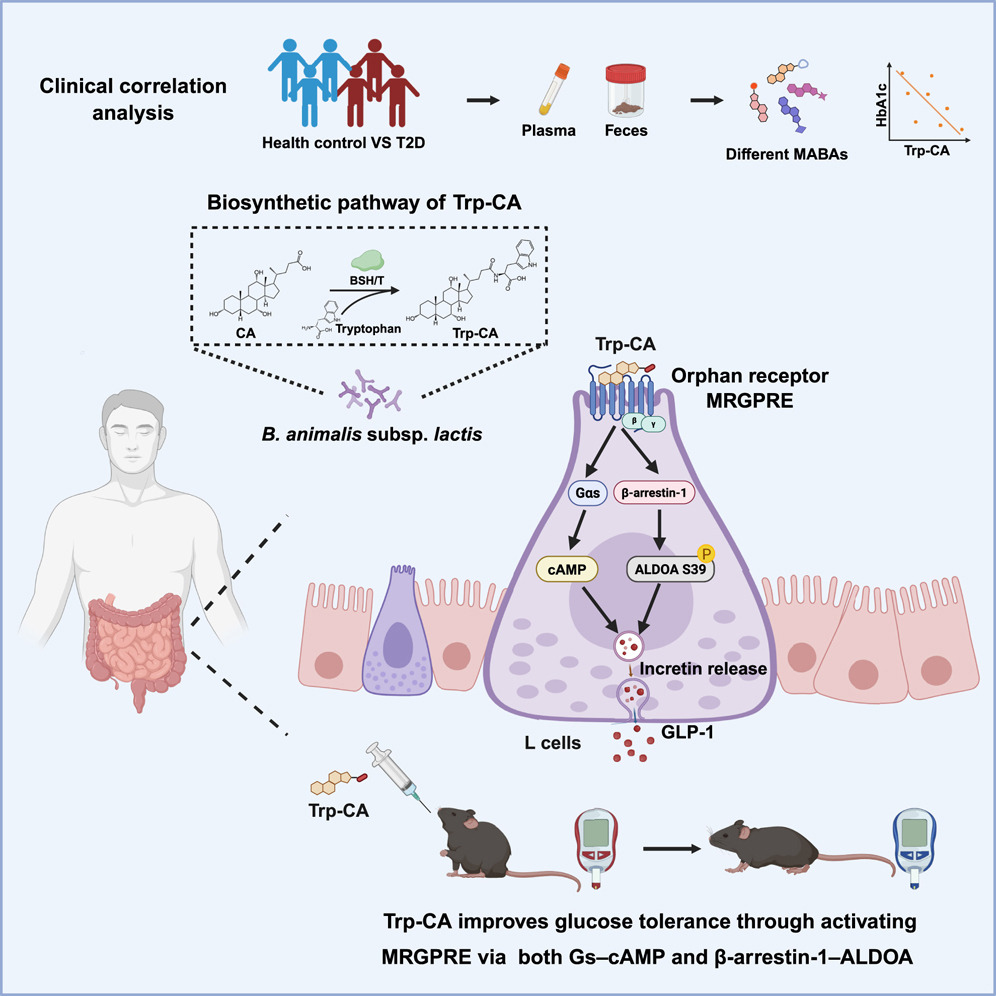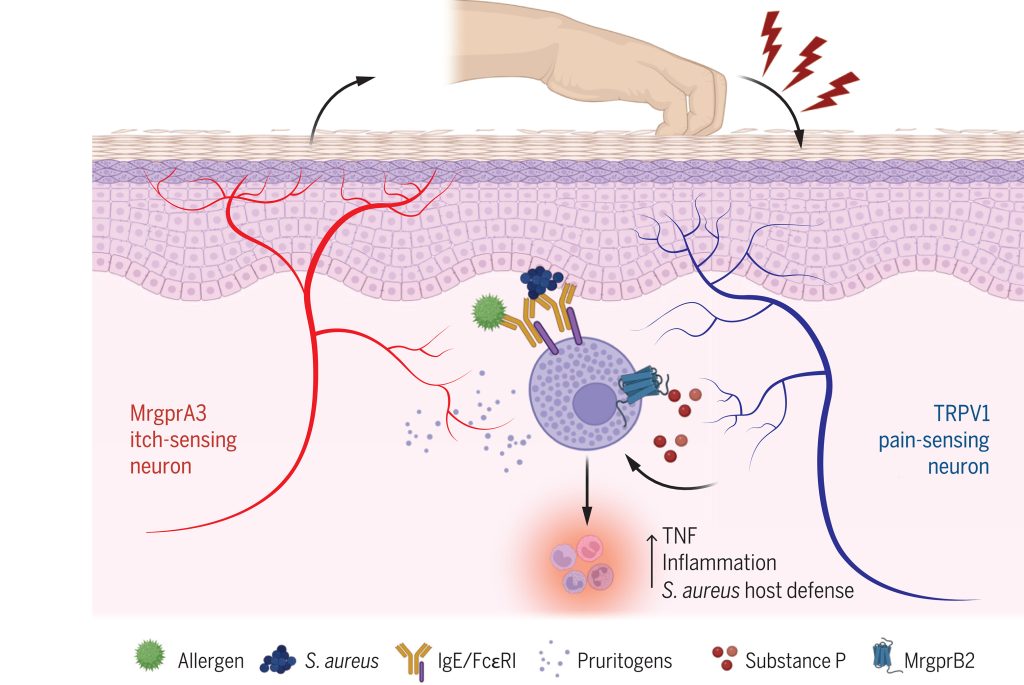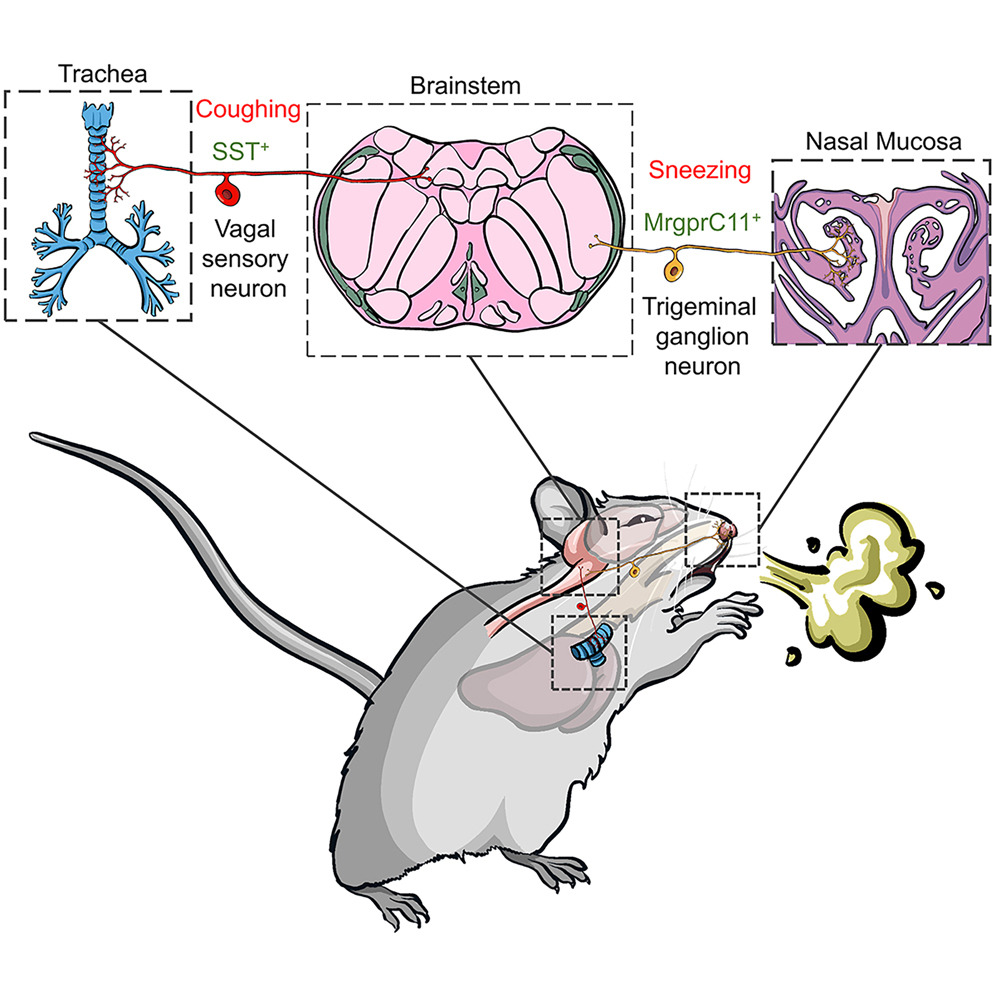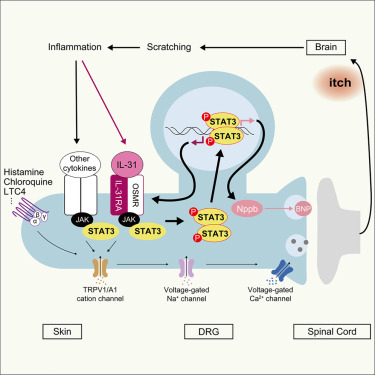Journal club 25.11.24
Tick peptides evoke itch by activating MrgprC11/MRGPRX1 to sensitize TRPV1 in pruriceptors
Xueke Li MSc a∗, Haifeng Yang MSc a∗, Yuewen Han MSc a, Shijin Yin PhD b, Bingzheng Shen PhD a, Yingliang Wu PhD a, Wenxin Li PhD a, Zhijian Cao PhD a c d
aState Key Laboratory of Virology, College of Life Sciences, Wuhan University, Wuhan, China bSchool of Pharmaceutical Sciences, South-Central University for Nationalities, Wuhan, China cBio-drug Research Center, Wuhan University, Wuhan, China dHubei Province Engineering and Technology Research, Center for Fluorinated Pharmaceuticals, Wuhan University, Wuhan, China
Received 4 May 2020, Revised 21 November 2020, Accepted 2 December 2020, Available online 22 December 2020, Version of Record 3 June 2021.
https://doi.org/10.1016/j.jaci.2020.12.626
Background
Tick bites severely threaten human health because they allow the transmission of many deadly pathogens, including viruses, bacteria, protozoa, and helminths. Pruritus is a leading symptom of tick bites, but its molecular and neural bases remain elusive.
Objectives
This study sought to discover potent drugs and targets for the specific prevention and treatment of tick bite–induced pruritus and arthropod-related itch.
Methods
We used live-cell calcium imaging, patch-clamp recordings, and genetic ablation and evaluated mouse behavior to investigate the molecular and neural bases of tick bite–induced pruritus.
Results
We found that 2 tick salivary peptides, IP defensin 1 (IPDef1) and IR defensin 2 (IRDef2), induced itch in mice. IPDef1 was further revealed to have a stronger pruritogenic potential than IRDef2 and to induce pruritus in a histamine-independent manner. IPDef1 evoked itch by activating mouse MrgprC11 and human MRGPRX1 on dorsal root ganglion neurons. IPDef1-activated MrgprC11/X1 signaling sensitized downstream ion channel TRPV1 on dorsal root ganglion neurons. Moreover, IPDef1 also activated mouse MrgprB2 and its ortholog human MRGPRX2 selectively expressed on mast cells, inducing the release of inflammatory cytokines and driving acute inflammation in mice, although mast cell activation did not contribute to oxidated IPDef1–induced itch.
Conclusions
Our study identifies tick salivary peptides as a new class of pruritogens that initiate itch through MrgprC11/X1-TRPV1 signaling in pruritoceptors. Our work will provide potential drug targets for the prevention and treatment of pruritus induced by the bites or stings of tick and maybe other arthropods.
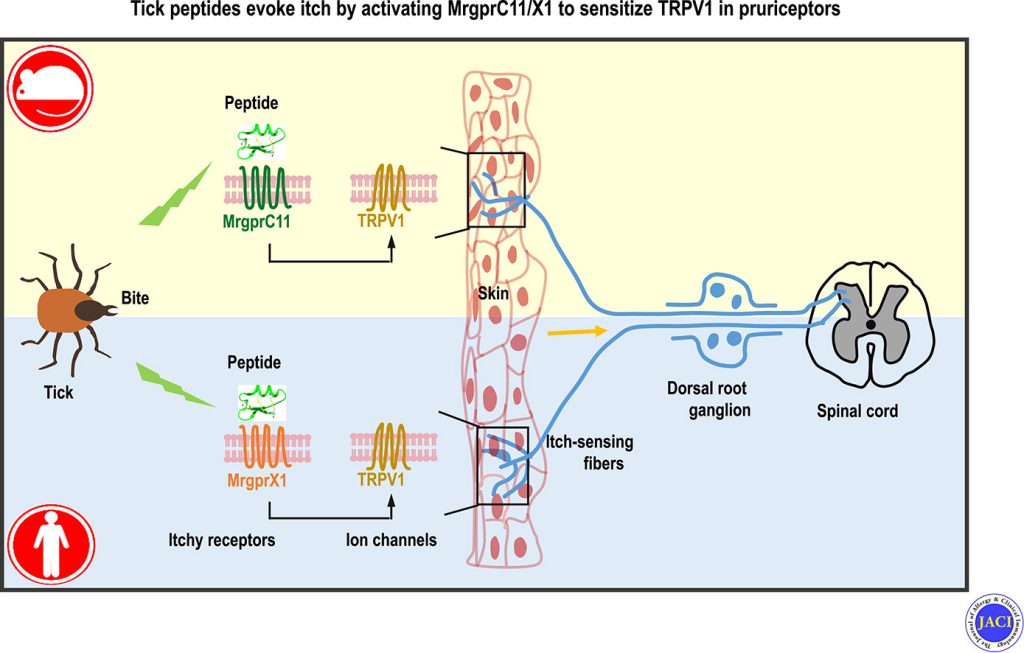
Journal club 25.11.24 Read More »

